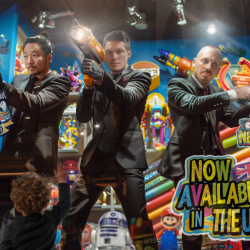With the fallout from COP 26 still in the news, sustainability continues to be a top item on the public agenda. People are concerned over the future of our planet and the world we are leaving for the next generation. But is this concern enough to drive change?
One would say that people pay more attention to negative news. This is true. Humans have a Negativity Bias and as such we are drawn to negative information first. And, even if they have the same intensity, the negative information (or events) will have a greater effect on our perceptions and memory than neutral or positive ones (Ratcliff R., 1985).
However, negative messaging is also processed more slowly (Wason, 1959), which can deter from the call to action and make us react slower (Kuhbandner et. Al., 2016). As such, scaremongering can inhibit us from taking the desired action rather than encouraging us to change our behaviour. This is particularly true in circumstances when the negative information goes against our past beliefs and behaviour, creating a cognitive dissonance — a psychological discomfort which we seek to resolve by finding excuses. Humans tend to repress uncomfortable feelings, mask them, or turn them into something else.
There is so much information around sustainability — some of it contradictory — and so many negative messages that it can leave some of us stressed, anxious and unable to act. Our brains are also wired to save energy as much as they can, as such it is easier (as well as less time and energy consuming) to do nothing and stick to old, familiar habits.
Behavioural science also shows that there is often a gap between what people say, and what they do, especially around living sustainably. Called the ‘green gap’, this is when the attitudes of an individual do not correlate to their actions. People do want to make a difference, but don’t always follow through. Utilising neuroscience tools, such as Reaction Time (RT) testing, we can gauge how strong people’s attitudes are. Or, in other words, we can understand the emotional conviction behind wanting to do a certain action. This, in turn, enables us to better understand the likelihood of doing actual behaviour.
Let me tell you about a project we ran, where utilising RT we were able to show that negative approaches don’t work. Working with IGD (the Institute for Groceries Distribution) Walnut Unlimited demonstrated that when it comes to encouraging the nation towards healthy, sustainable diets, focusing on what food they shouldn’t eat is not effective. This will tap into people’s ‘Loss Aversion’ and so, backfire! Instead, interventions need to be reframed to talk about the positives: what type of food they should have more of and what the benefits of these are. They also need to simplify what consumers need to do and provide the nation with easy steps towards eating more healthily and sustainably (IGD Appetite for Change, 2019-2021).
What does this mean for brands?
Sustainability is essential for brands. It is simply not a ‘nice to have’ anymore. Getting brand strategy and communication right involves a careful blend of art and science. Throw sustainability into the mix and you will need to ensure that deep human understanding is at the heart of any step you make.
The good news for brands is that their customers are more attracted to brands with authentic sustainability promises. In a study run last year by UNLIMITED’s Human Understanding Lab, around two-thirds of consumers agree that ‘the green credentials of a brand are important to me’. Those who make sustainable choices regularly show significantly higher levels of emotional conviction in their agreement, and green credentials were also shown to be the strongest driver of sustainable purchase decisions for them. All of this suggests that brands do play a key role in helping people make greener choices.
Given that we know that fear is not always a motivator and can even have the opposite effect, brands need to take a positive approach that moves their comms away from doom and gloom and scaremongering. This approach needs to be driven by data, to understand where consumers are in their sustainability journey, to use behavioural science to analyse their needs and as such, work with them, rather than against them.
Brands could choose to help people feel understood and support them in their efforts to live sustainably, even when life gets in the way. Neuroscience tells us that feeling understood is a core human need. It activates neural regions previously associated with reward and social connection — a better place to build on for the behavioural change we are trying to unlock. There is an important educational role that brands can take in not only telling consumers what the sustainable options are but also showing them how they can become more sustainable in their daily lives and as a result how they can make a positive impact. This will further engage consumers with the topic, but also increase brand closeness.
As such, giving clear guidelines and positive reinforcement can be better allies for sustainability endeavours, encouraging people to choose the sustainable options a brand has to offer. This positive angle for brands is not only bringing hope to a delicate subject but is also bringing a different strategy.
In a world dominated by negative news, a message of hope can resonate with a public desperate for some good news!
Featured image: Toa Heftiba / Unsplash





























